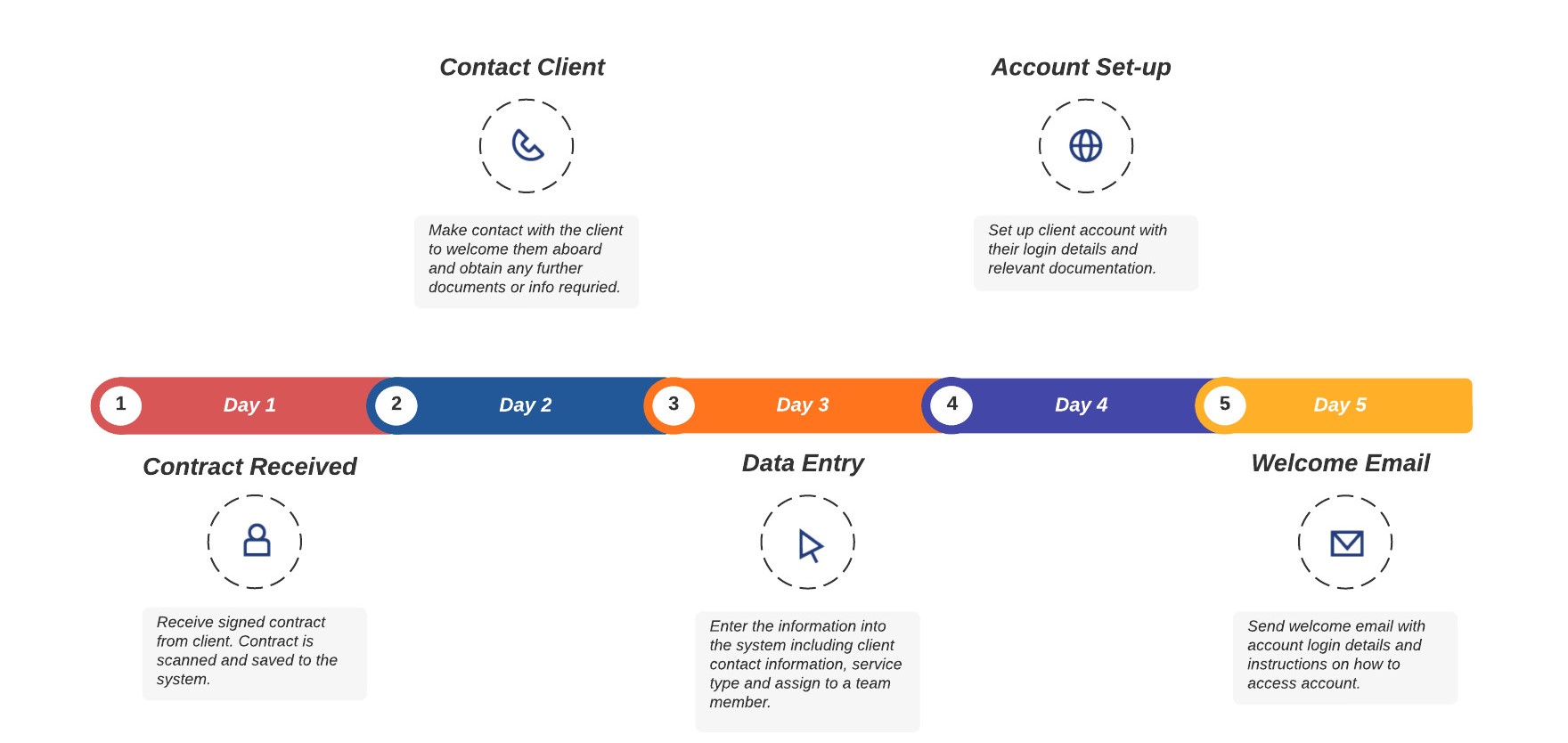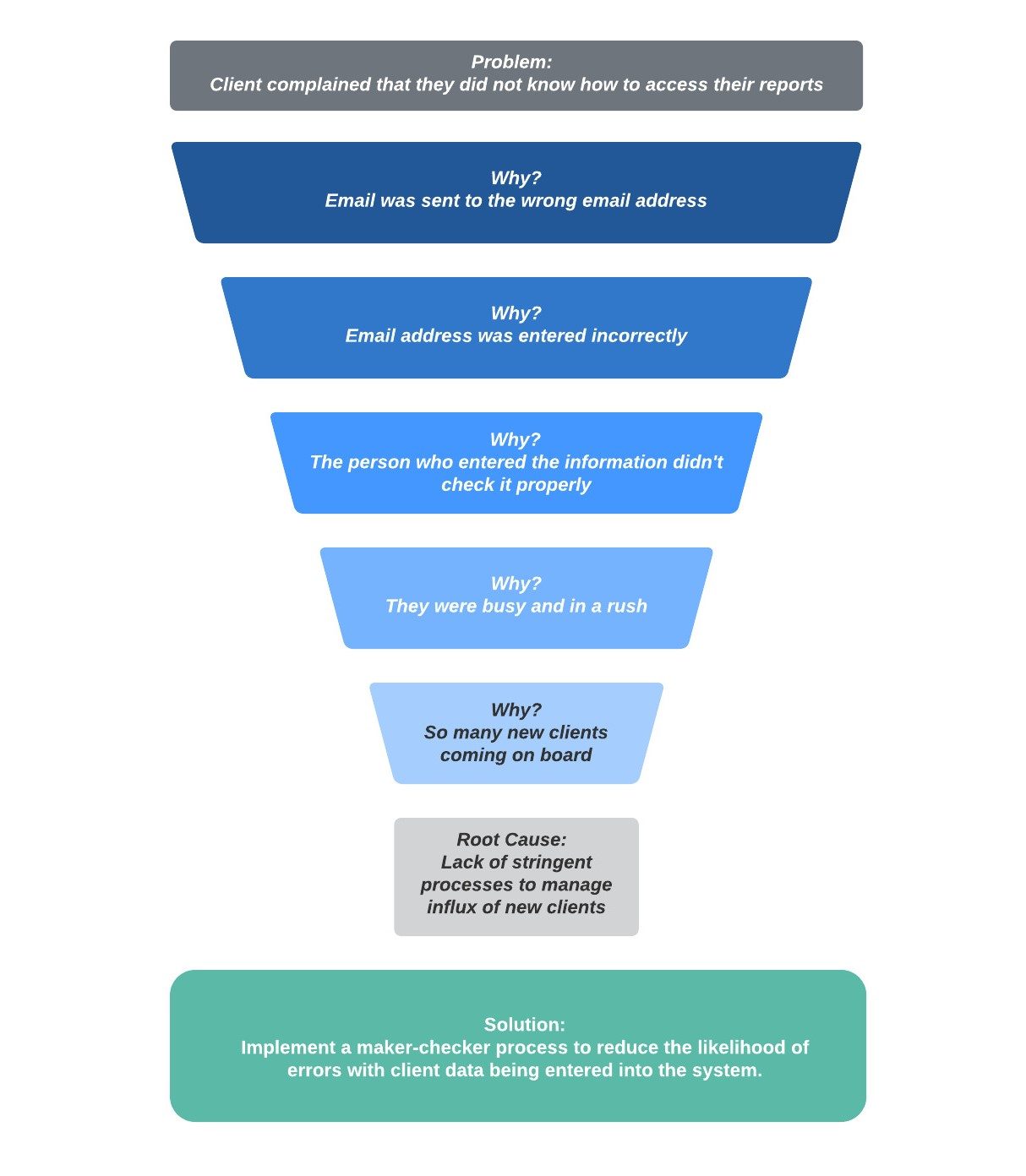The good news is that there are some great tools out there to help you problem-solve in a structured way.
Trinity Advisory has been helping to improve and scale small businesses for over 10 years. Over this time, we've come to learn about the best tools to use in getting to the root cause of problems in business and then implementing practical solutions.
Here are our suggestions for problem-solving in your business:
The first step is to identify critical problems in your business. Examples could be:
A few ways to identify the issue is to:
An example for an accounting firm could be that a new client has just complained to you because they did not know how to access their financial reports online.
It seems obvious, but the most important step in finding a solution is to correctly identify the problem. It’s hard to start solving a problem if you can’t put your finger on exactly what’s wrong.
Here are six questions to ask that could help you to describe your operational problems:
Once you’ve answered these questions, you’ll be closer to understanding what part of the process has broken down.
If your problem involves several individuals or departments, you may need to map the process to determine where the issue is occurring.
Process mapping is a management tool that is used to visualise the flow of work within a business process. A process map shows the steps and people involved in a business process.
You don’t need to use fancy software to create a process map, you can use a whiteboard and marker to create a map of the process.
Following our example from step 1, below we've provided a map of the Client Onboarding process:

By visually looking at your process, you can better understand where responsibilities sit and where the process may be broken.
Once you’ve mapped your process, you’ll have a greater understanding of when and why things happen. Next, you need to find the underlying cause of problems to develop the right solutions.
A simple problem can be tackled with the “five whys” approach—asking “why” at least five times to trace the problem back to its source.
Sakichi Toyoda, the Japanese industrialist, inventor, and founder of Toyota Industries, developed the 5 Whys technique in the 1930s. Toyota still uses this method to solve problems today.
You'll know that you've revealed the root cause of the problem when asking "why" produces no more useful responses, and you can go no further.
Here is a very simple example of the ‘why’ method in use:

When the root cause of the problem is understood, involve your team in brainstorming solutions. Be sure to consider how the solutions will affect all areas of the business.

If you find that there are multiple root causes to the issue, then you may want to use the Pareto Analysis to determine which root cause has the biggest impact. i.e. the 80/20 rule. That is, a small number of factors is usually responsible for a disproportionate number of issues. Use the data at hand to determine which issues are causing the greatest impact on your business.
You can see in this example, we’ve discovered that introducing a maker-checker process for data-entry might be the best way to avoid these issues from occurring in the future, especially considering that the business is in a growth phase and the issue could more regularly reoccur as time goes on.
With your team, develop an action plan to implement the solutions. The plan should detail specific initiatives, who is responsible for carrying them out and by when.
In the example above, the solution requires that the management team assign a staff member to the task of double-checking that all client data has been entered correctly. You’ll need to determine who that will be, when they will start and what the new process will look like.
It’s important to follow up with your team to make sure action items have been accomplished. At this point you should identify the right metrics to track, monitor improvements and gauge impacts on your business. Be ready to adjust your action plan if needed and evaluate any gaps between anticipated and actual results.
In our example, you may gain further insights into any other undiscovered issues that you can work to resolve and get on top of quickly.
So test, measure, adjust, repeat!
Trinity Advisory is not just an accounting firm, we specialise in Accounting, Business Advisory and Coaching for small businesses. If
you’re a small business owner who needs help identifying process issues and implementing the right solutions, scaling your business
and growing your profits, then get in contact today to learn more about our Accounting
and Business Advisory Services.
![]()
Need support for your business?
Contact Trinity Advisory today.